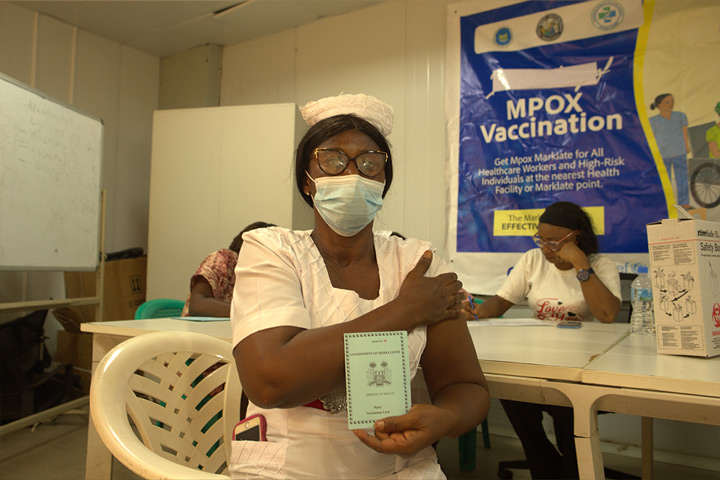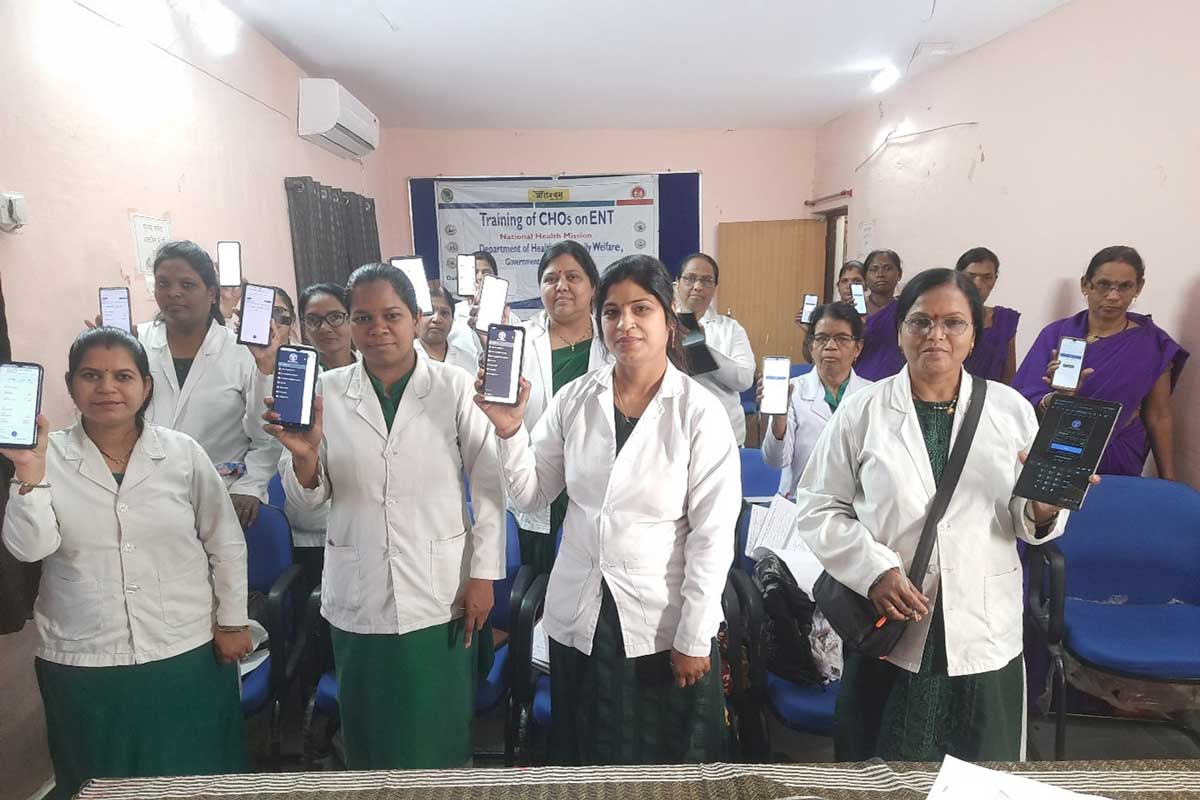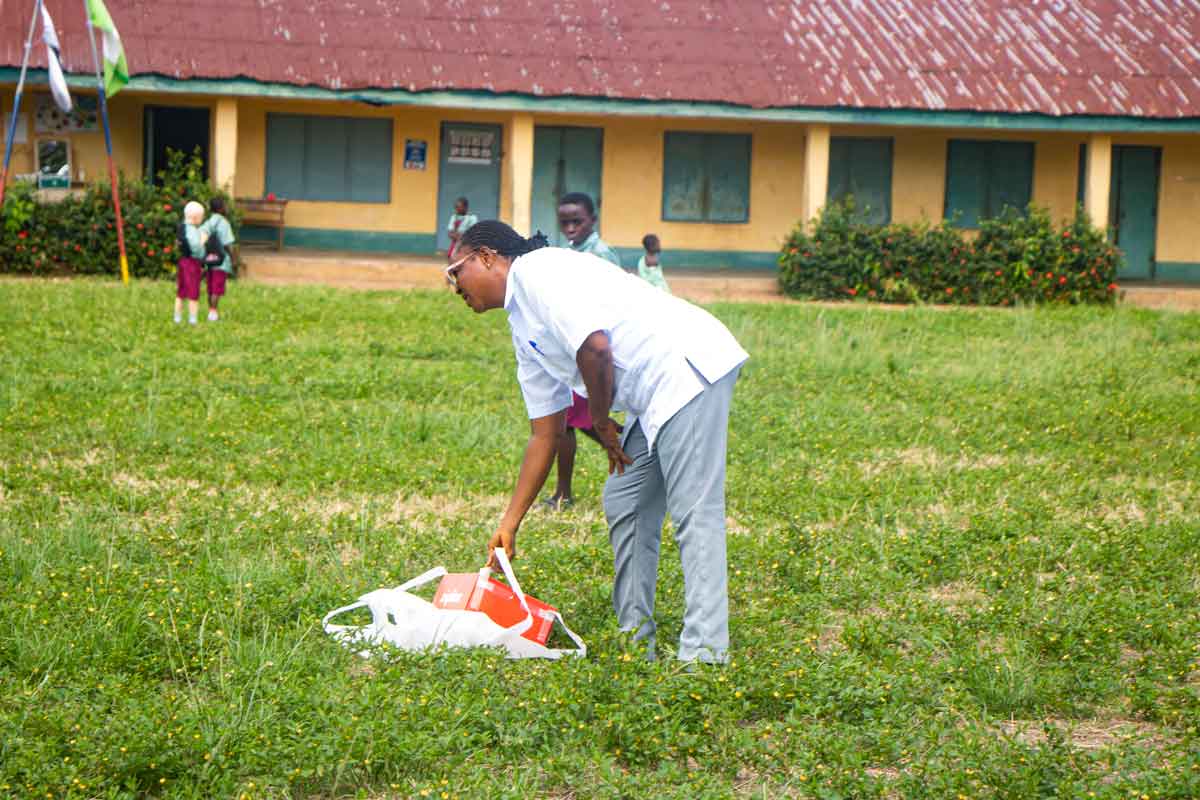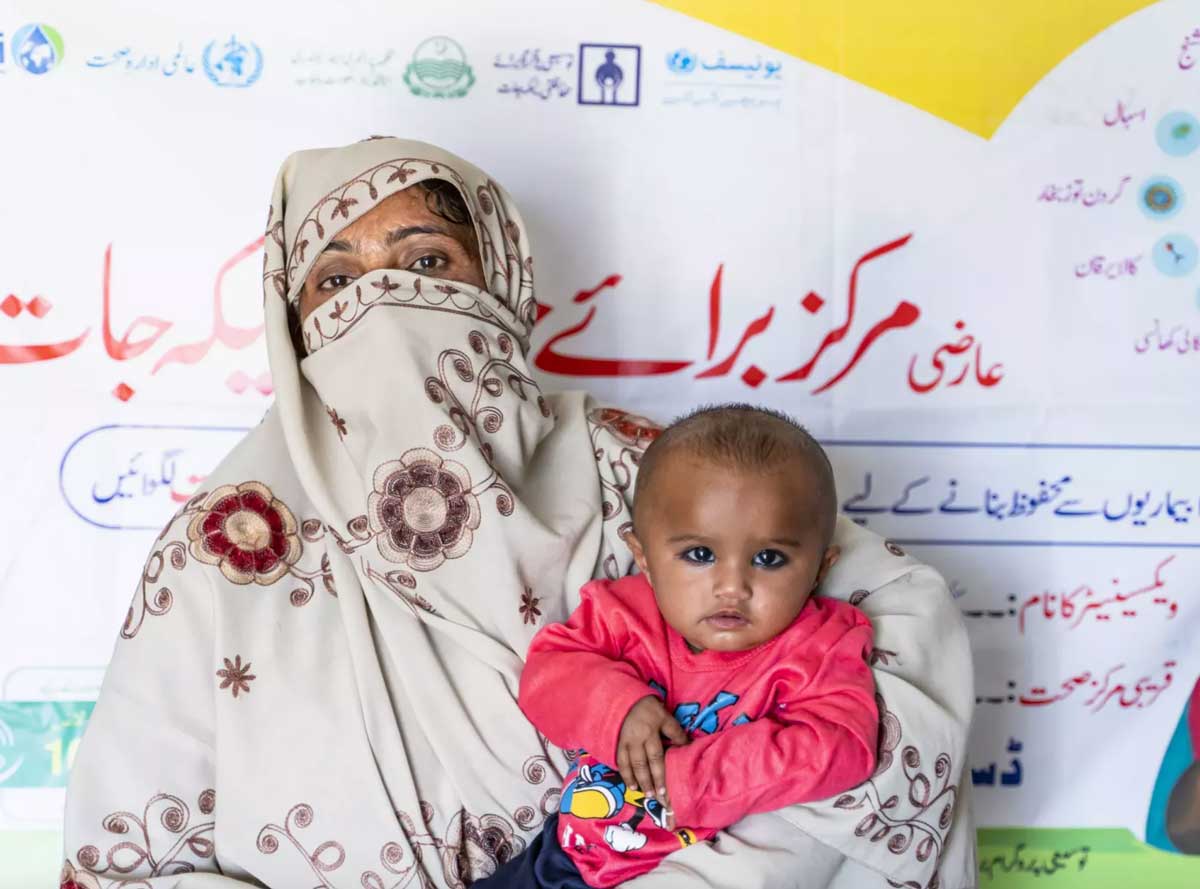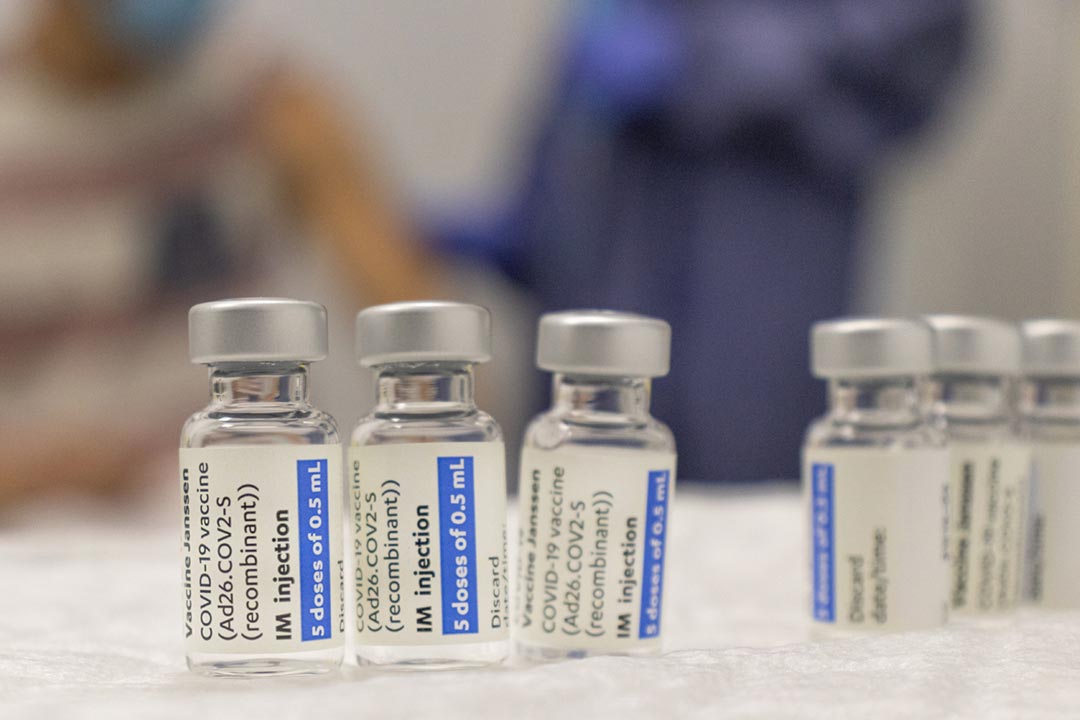Could tackling gendered harassment of community health workers boost vaccination coverage?
Ethnographic research focusing on community health workers shows that gendered harassment of CHWs is common – and has negative consequences on the health system, hampering the achievement of immunisation coverage goals.
- 6 March 2024
- 6 min read
- by Annette Wangong’u
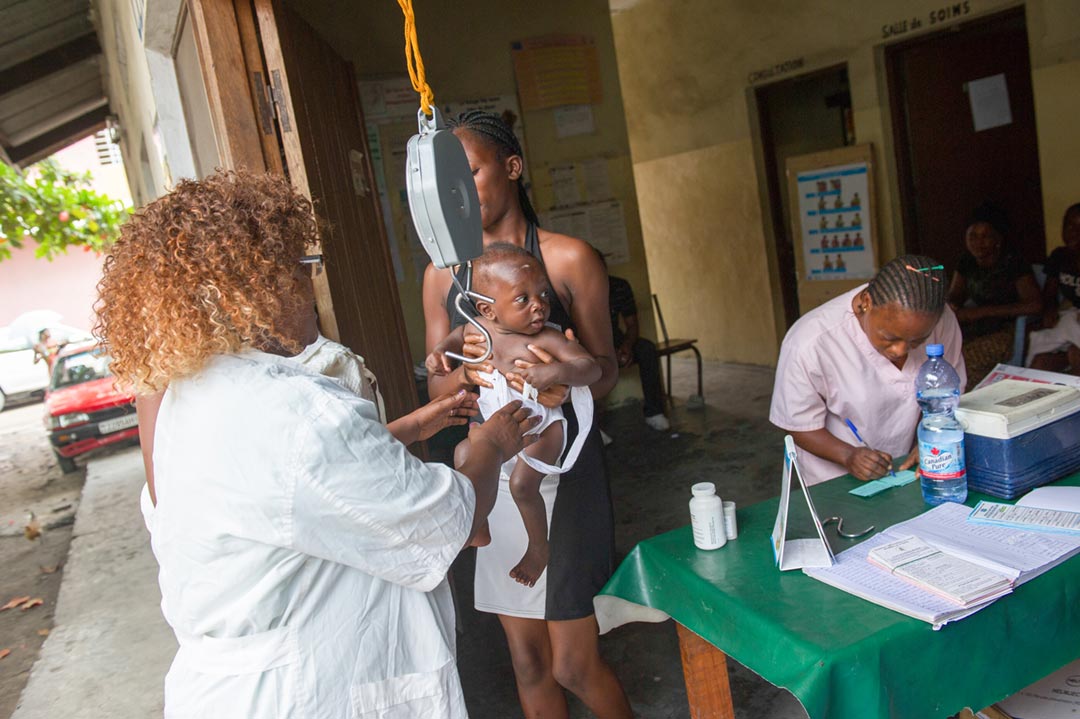
Across the world, community health workers (CHWs), the majority-women workforce staffing the ground-level of the global healthcare pyramid, face gendered violence. That's not only unjust, but a problem that amounts to a threat to public health, suggest researchers Svea Closser and Marium Sultan.
In an ethnographic study published last year, Closser, Sultan and their co-authors investigated the complex forms of structural CHW vulnerability that arise where gender dynamics, material precarity and inadequate labour protections intersect in these typically casualised and poorly remunerated roles.
"One emerging theme across our work was that gendered harassment presented an obstacle to the work of female CHWs – including the work of reaching community members with vaccines and other critical health interventions," says Closser, a medical anthropologist at Johns Hopkins who specialises in the social and political dynamics shaping primary health care.
Fear is limiting. Social mobilisation, data collection and patient care depend on trust – at least if they are to be conducted with the level of focus and precision crucial for establishing positive relations and achieving high coverage of health interventions.
In other words, something needs to be done. For the global health community, there exists an ethical, legal and practical responsibility to help create for health workers of all stripes, a decent and equitable workplace free from all forms of discrimination.
The consequences of not addressing the structural and systemic vulnerabilities facing CHWs include ramifications on women's physical and mental safety at the most micro level, and on the effectiveness of health systems, including vaccination coverage, at the macro scale.
Locating vulnerability: CHW work is gendered
UNICEF estimates that in low- and middle-income countries, women make up nearly 64% of the health sector workforce; in high-income countries, over 75% of the sector are women. Data on CHWs, a largely informal group of workers, is harder to pin down, but researchers estimate that about 70% of CHWs are women.
In their study, Closser, Sultan and their co-authors sketch the origins of this gender skew. Viewed from the health system's vantage point, hiring women to community-level roles has advantages: women may have more access to women caregivers and their children. Viewed from the perspective of the often poor, often disproportionately poorly-educated woman-staffed part of the labouring class, CHW roles present lower barriers to access, demanding few formal qualifications, and enabling women to work close to home.
But these are also jobs that pay low wages – often bypassing conventional labour standards by billing themselves as volunteer roles – and as such, offer less job stability.
That means that even as CHW jobs offer work and pay to women who might otherwise be excluded altogether from the workforce, CHW staffing both benefits from and reproduces inequality of resource distribution between the different genders.
Harassment and violence
Add to that the fact that health care is a disproportionately embattled domain. Incidents of violence and harassment within the health sector are 16 times more prevalent than in other sectors, according to WHO.
Data on gendered harassment and violence specifically facing CHWs is thin – it's rarely a primary focus in research – but Closser, Sultan et al. note that the gendered harassment and violence faced by CHWs is probably more common than has been reported.
Have you read?
Here's some of what we do know: in northern Karnataka, India, 32% of women CHWs reported experiencing sexual violence, and 26% said they had faced physical violence at the workplace. Sometimes, the perpetrators were members of the community in which they served.
Across India, 76.3% of Accredited Social Health Activists (ASHAs) – a cohort of exclusively women CHWs – reported that violence in the workplace negatively impacted the quality of their work. Similar evidence from Pakistan, Kenya, and the Democratic Republic of Congo (DRC) – where violence against CHWs spiked in the context of health emergencies such as COVID-19 and Ebola – supports anecdotally-substantiated, common-sense convictions that this issue is global in scope.
Wrong end of the hierarchy
The gendered harassment faced by CHWs is sustained by the hierarchical structure of health care work. Care work is often seen as less valuable than other health professions, such roles that are curative in scope, and are less well paid.
CHWs can also appear as representatives of a health system – and in some cases, of a government – that may be the object of community distrust. At the same time, the very system they appear as agents of, casualises them, excluding them from the protection or legitimacy that might shield them from scapegoating.
CHWs' compromised safety on the job is an intersectional problem, as certain groups of women face even higher probabilities of encountering gendered harassment, and the nature of harassment varies.
Effects on the health system
According to the Closser et al study, women who experienced violence and harassment expressed fear for their safety in the field. Fear is limiting. Social mobilisation, data collection and patient care depend on trust – at least if they are to be conducted with the level of focus and precision crucial for establishing positive relations and achieving high coverage of health interventions.
Another consequence of working while afraid is an increased likelihood of medical errors and a higher tendency to be absent from work. Facing gendered harassment and violence may also contribute to CHWs' decisions to exit the workforce, with obviously deleterious consequences for staffing.
According to WHO, gender equity issues, including those pertaining to gendered harassment, impact health worker shortfall and must be addressed. Gender equity is critical to resilient health systems, WHO notes.
A systemic challenge and solution
Globally, women's movements have made bold calls to hold state and non-state actors accountable for gendered violence against women. Think of the #MeToo movement, the #NiUnaMenos campaign that began in Argentina, the Aurat March in Pakistan, and #TotalShutDownKE in Kenya.
In the health sector, and in response to the pervasive issue of gendered violence and harassment of health workers, the #HealthToo movement, spearheaded by Women in Global Health, has recently gained traction.
A 2022 policy report by WGH on sexual exploitation, abuse and harassment (SEAH) of women health workers proposed several solutions, including: investment in sex-disaggregated data to ensure the documentation of the prevalence of harassment is visible; creating safe avenues for women to report abuse; and ensuring these spaces are survivor-centred. Other solutions include increasing the number of women in senior leadership roles, as 75% of leaders in the health sector are men, and the ratification of the ILO convention 190 (to date, not all countries have ratified it).
CHWs operating outside of formal workplaces have even fewer protections than counterparts who may be based at health facilities. The women CHWs interviewed by Closser and Sultan identified strengthening labour protections as a crucial and immediate first step towards the creation of safe environments for CHWs – environments that will enable them to sustain their pivotal role in society.
During a virtual interview Closser explained that a basic and necessary step towards protecting women CHWs from gender harassment would be "thinking about frontline community health workers as workers – because I think part of the issue is that we've been considering them to be volunteers, [who] are doing it for the good of the community."
Sustained and targeted investment in research and data, including on health programmes that prioritise the protection of CHWs from gendered harassment, is indispensable.
If gendered harassment of women in the health workforce and of woman CHWs continues to be viewed as a personal issue rather than a shared concern that demands public recognition and action, health systems – and that means all of us – will suffer.
More from Annette Wangong’u
Recommended for you

